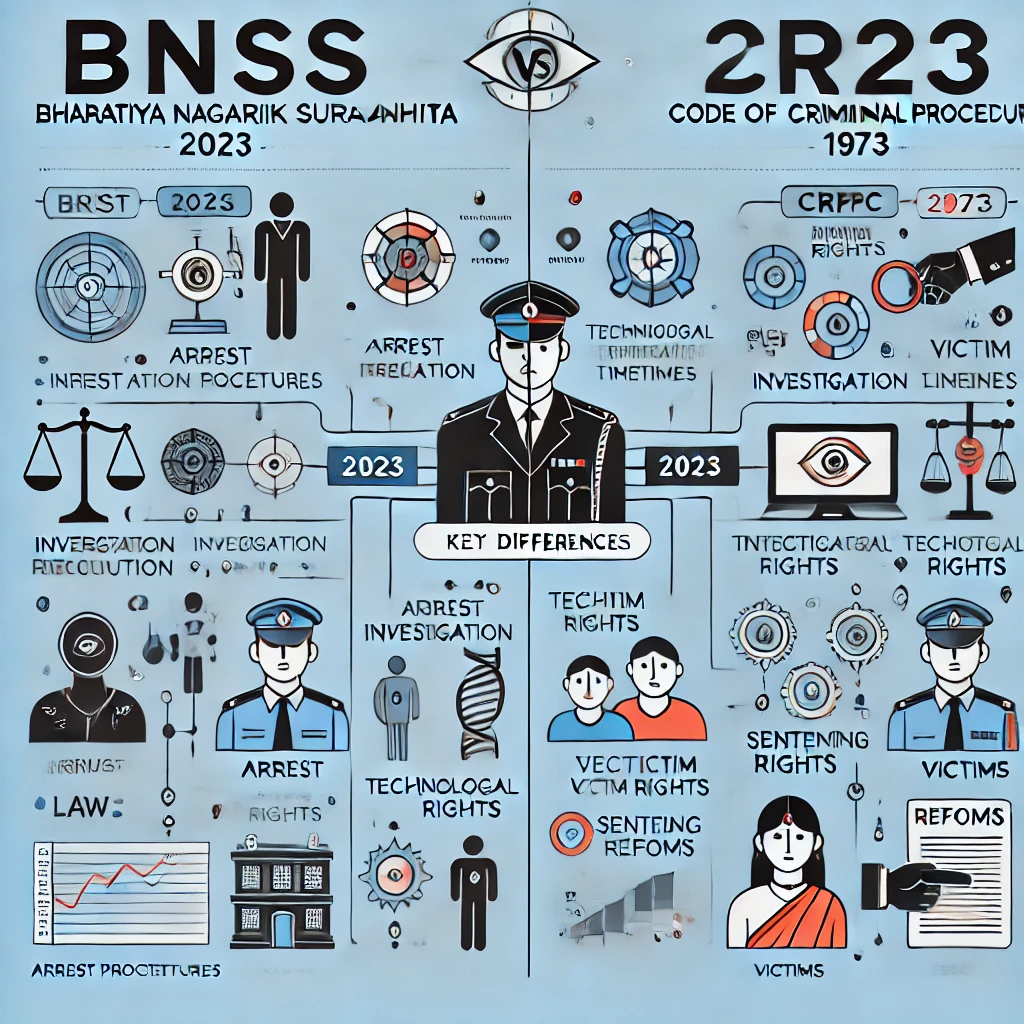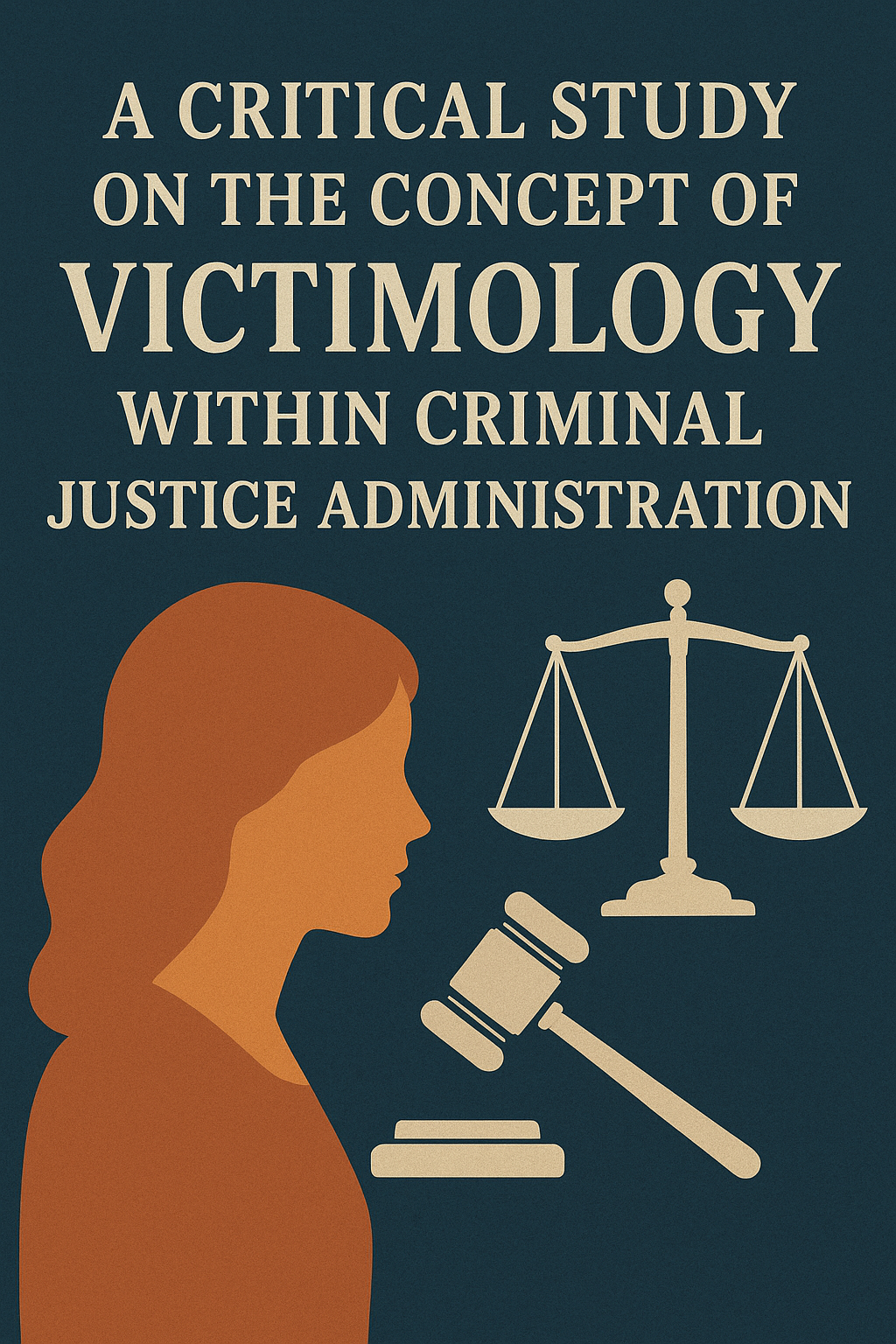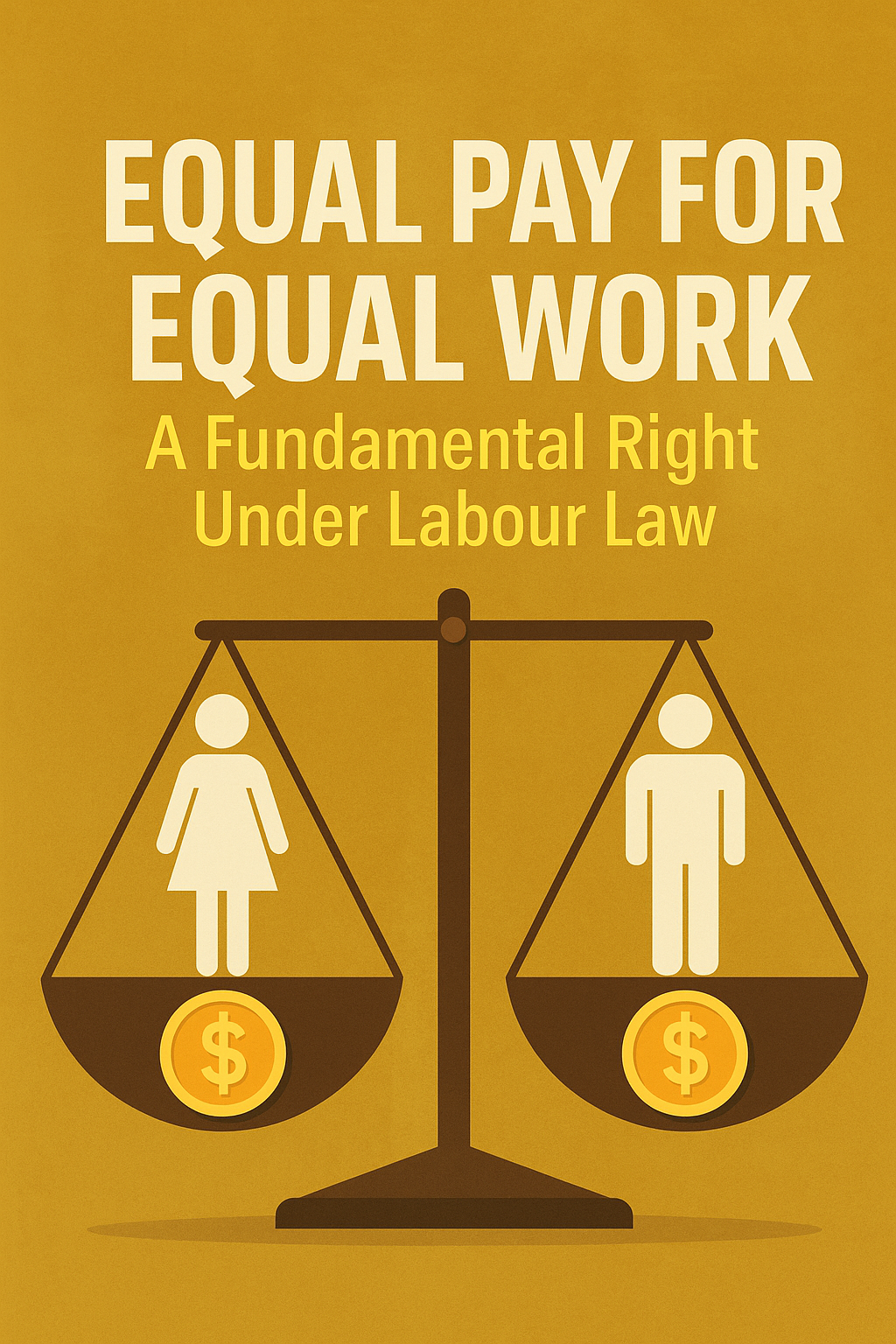
Introduction
The Indian criminal justice system has historically relied on the Code of Criminal Procedure, 1973 (CrPC). As a key procedural law, the CrPC has encompassed trials, enforcement of criminal laws, the rights of both the accused and victims, and the maintenance of order in the country. However, over time, India’s legal and social landscape has undergone significant transformations. The introduction of the Bharatiya Nagarik Suraksha Sanhita, 2023 (BNSS) aims to revamp and update the criminal procedure, tackling current issues such as procedural delays, low rates of convictions, and the insufficient use of technology.
CrPC v. BNSS
History and Objectives
CrPC: Implemented in 1973, the CrPC replaced the Code of Criminal Procedure, 1898. The CrPC aimed to unify the procedural framework of Indian criminal law and create consistency in the justice system.
BNSS: The BNSS serves as a successor to the CrPC. Its goal is to ensure a faster justice delivery system, focus on the needs of victims, leverage technology, and streamline legal procedures.
Structure
CrPC: The CrPC is divided into 37 chapters and 484 sections.
BNSS: The BNSS is divided into 39 chapters and 531 sections. The BNSS is longer than the CrPC.
Speedy Justice and Time-Bound Processes
CrPC: The CrPC does not set compulsory deadlines for investigations or trials, leading to case backlogs in the courts.
BNSS: The BNSS introduces timely procedures to counteract delays, with provisions that require investigations and trials to be completed within designated timeframes.
Use of Technology
CrPC: The CrPC does not sufficiently incorporate technology in criminal proceedings. While there have been some updates, such as the inclusion of electronic evidence, it remains limited.
BNSS: The BNSS introduces technology-driven initiatives to enhance efficiency and accessibility. These measures are essential, especially for facilitating remote access to justice.
Victim-Centric Approach
CrPC: The CrPC primarily emphasizes the rights of the accused, with only minimal provisions for the protection and compensation of victims.
BNSS: The BNSS adopts a victim-focused strategy, granting victims additional rights and support, highlighting the importance of addressing their needs within the Indian criminal justice framework.
Witness Protection
CrPC: The CrPC lacks comprehensive measures for witness protection, resulting in intimidation that often discourages witnesses from coming forward with their testimony.
BNSS: The BNSS includes targeted provisions for protecting witnesses, offering measures such as anonymity, relocation, and financial support, aimed at encouraging witnesses to testify and strengthening the overall evidence.
Police Powers
CrPC: The CrPC allows for judicial oversight during police investigations to promote accountability and prevent the misuse of authority. Approval of the judiciary is required for arrests and detentions.
BNSS: The BNSS grants police additional powers, enabling them to hold individuals for longer periods without judicial review in certain situations. Such extended authority might lead to police misconduct, custodial abuse, and the improper exercise of power.
Community Service as Punishment
CrPC: The CrPC does not recognize community service as a form of punishment.
BNSS: The BNSS introduces community service as an alternative to punishment for minor offenses, aimed at alleviating pressure on correctional facilities and promoting restorative justice.
Gender Sensitivity
CrPC: The CrPC includes some gender-sensitive clauses, such as the stipulation that female officers must take statements from women. Nonetheless, it fails to adequately address the gender-based issues faced by women within the criminal justice framework.
BNSS: The BNSS adopts a gender-sensitive perspective, ensuring that female officers are mandated to take statements from women.
Bail Provisions
CrPC: The CrPC upholds the notion that bail is a right in bailable offenses while courts hold discretion in non-bailable offenses. Courts strive to balance the rights of the accused with the safety of the public when deciding on bail.
BNSS: The BNSS sets stricter criteria for bail in specific circumstances. Although this aims to safeguard public safety, it could result in the arbitrary denial of bail, prolonged pre-trial detention, and overcrowding in prisons.
Summary Trials
CrPC: Under the CrPC, summary trials exist for minor offenses but are not commonly utilized.
BNSS: The BNSS broadens the scope of summary trials to hasten the resolution of minor cases, aiding in alleviating the backlog in courts.
Judicial Oversight
CrPC: The CrPC establishes judicial oversight during various phases of criminal proceedings, such as arrest, remand, and bail, acting as a check against any arbitrary police or executive actions.
BNSS: The BNSS reduces judicial oversight in certain areas, granting greater authority to police in investigations and detentions. This shift of power from the judiciary to the executive may lead to potential abuses.
Zero FIR
CrPC: The concept of Zero FIR, which allows for the filing of an FIR at any police station, emerged through judicial interpretations rather than being explicitly stated in the CrPC.
BNSS: The BNSS formally incorporates the Zero FIR principle into legislation, transforming it into a statutory provision that makes it more accessible for complainants.
Risk of Rushed Investigations and Trials
CrPC: The CrPC does not enforce strict timelines for trials and investigations, enabling comprehensive and meticulous processes. Although this can result in case delays, it prevents hurried proceedings.
BNSS: The BNSS requires that trials and investigations be concluded within a set timeframe. This could lead to rushed processes, potentially jeopardizing the integrity of justice. Investigators and prosecutors might prioritize deadlines over accuracy, raising the likelihood of incorrect acquittals or convictions.
Civil Liberties
CrPC: Courts have interpreted the CrPC to uphold individuals’ fundamental rights and civil liberties, including the right to a fair trial and protection from arbitrary detention.
BNSS: The BNSS, through provisions such as stringent bail conditions, enhanced police powers, and weakened judicial oversight, risks infringing on an individual’s civil liberties. This could result in prolonged detentions, arbitrary arrests, and restricted access to legal remedies, violating fair trial principles.
Right of Speech and Expression
CrPC: The CrPC does not explicitly guarantee the right to speech and expression, as these rights are protected by the Indian Constitution.
BNSS: The BNSS’s expansive definitions of offenses like organized crime and terrorism may be misused to restrict freedom of speech and expression. Journalists, activists, or artists who criticize the government could find themselves charged under these provisions.
Conclusion
The Bharatiya Nagarik Suraksha Sanhita, 2023 (BNSS) represents a significant shift from the CrPC, aiming to create a more efficient, technology-driven, and citizen-focused criminal justice system to enhance the quality of justice and restore public faith in the legal system. However, its more stringent provisions and absence of adequate safeguards may be misused in certain areas, and the focus on time-bound procedures may undermine the quality of justice with hasty investigations and trials.
References:
- Bharatiya Nagarik Suraksha Sanhita 2023.
- Code of Criminal Procedure 1973.
- ‘The Bharatiya Nagarik Suraksha (Second) Sanhita, 2023’ (PRS LEGISLATIVE RESEARCH) https://prsindia.org/billtrack/the-bharatiya-nagarik-suraksha-second-sanhita-2023 accessed 21 February 2025



